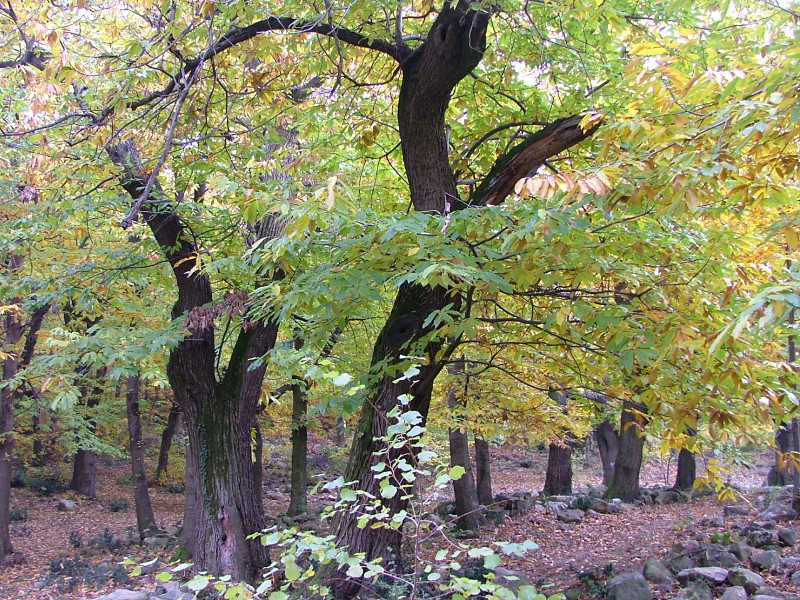Marron trees on Mt. Venda
In the Colli Euganei area, cultivation of chestnut trees for their fruits dates back to the Roman age, as testified by Pliny (1st century b.C.), who wrote that Corelio from Este taught the Neapolitans how to graft chestnuts. Chestnut trees grow on siliceous soil, like those deriving from volcanic rocks in Colli Euganei, and mostly cover the cooler, north-facing slopes, although they are present in other areas, too.
The tree blooms in May-June, emanating a very characteristic scent. Each fruit comes from a single flower, and it ripens inside its well-recognisable spiky shell; the term “chestnut” is properly used when two or three fruits ripen inside a single shell, while “marrons” grow on a variety of chestnut tree which ripens only one fruit in each shell. Marron trees (“maronari” in Italian) are grown by grafting chestnut trees, thus obtaining bigger and tastier fruits. These majestic, centuries-old trees are also recognisable by the fissures in their leftward spiralling trunks, which make them look twisted up.

Marron trees on Mt. Venda – M. Venda, Cinto Euganeo
(photo by: PR Colli Euganei)




